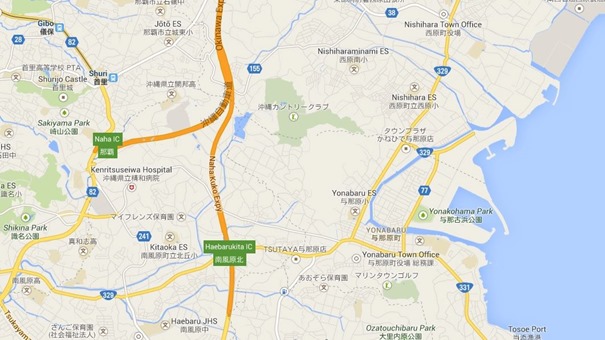As Nagamine Shōshin has pointed out, it is important to study the history of Ryūkyū to understand Okinawan martial arts. During Ryukyu kingdom times existed private tutors called “Yaka.” It was not an official government position and therefore there are hardly any records.Well, Motobu Naoki sensei wrote an article about Yakā in 2016.
Well, as some may have heard about, there is a kata called Yakā no Sai. It has been handed down in the Taira Shinken lineage of Ryūkyū Kobudō. There are a few videos of it online now, most importantly by Okinawa Prefecture, Nakamoto Mamoru of Bunbukan (see video below), Frank Pelny (Tesshinkan; this is Taira-Akamine-Tamayose lineage), and Maarten Van Bloois (Taira-Inoue lineage). I also uploaded an 1970s vid of it.
This kata is usually outside the teaching curriculum, that is, it is above the grading to 5th Dan in Okinawan dōjō belonging to the Taira lineage of Kobudō. It might also have been lost in one or another branch of this lineage. Otherwise, while finding it simply listed among the sai kata on various websites, I doubt that many people ever actually trained it. Mario McKenna pinned down what was known about the kata but the page is offline.
Yaka is the name of a small village north of Uruma. So it seem likely that “Yaka no Sai” refers to this place, especially since many kata names are place names or personal names. That is, it is the first thing that comes to mind if you only call it “Yaka no Sai.” But then, discovered by thorough research, the kata’s full name is given as “Hama Udun Yakā no Sai” (浜御殿屋嘉阿の釵) (BRD 1978 and elsewhere). This name implies that it is “The Sai Kata of Yakā of the Beach Residence.” This “Hama Udun” or “Beach Residence” was located in the central Yonabaru region, not up in the north where the village of Yaka is.
What are these residences called Udun? The Japanese term Goten 御殿 denotes the residential house of a noble person, a magnificent residence, a palace, or a castle. In the Ryūkyūan language the same term is pronounced Udun and had a twofold meaning. As for one, it was the honorific name used for the mansions of the Anji Estate stewards (Anji-jitō) living in Shuri. And two, it was a honorific designation for the family of this Anji. Additionally, it was also used to refer to the families of the king’s heir and the other princes.
Because the Udun families administered the various districts (magiri 間切) of the kingdom, they often bore the district‘s name as their family name. At the time of the abolition of the feudal fiefs (1872/79) there were the following twenty-eight Udun families in Ryūkyū: Kunigami, Ōgimi, Gushi, Haneji, Nakijin, Motobu, Nago, Ie, Kin, Urasoe, Ginowan, Misato, Yuntanza, Goeku, Yonagusuku, Gushikawa, Oroku, Tamagusuku, Gushikami, Tamagusuku, Mabuni, Takamine, Makabe, Kyan, Tamagawa (Kaneshiro district), Ōmura (Chatan district), Matsuyama (without an actual district), and Nakagusuku. Among the above, Nakagusuku Udun was the mansion of the heir of the king, while Ginowan and Matsuyama Udun were the mansions of the other princes.
The villas of the king were also referred to as Udun: Shikina Udun and Ochaya Udun. Shikina Udun is well known as the place were Matsumura Sōkon served as a royal guard (Cf. Yoshimura 1941). It is also well known that martial arts performances took place at the Ochaya Udun in 1867 (Cf. Shimabuku 1956).
Another place related to royalty is the Hama Udun. It was not a residence but one of the age-old places of worship called Uganjū, which were often affiliated to large open spaces used for all sorts of communal meetings during Ryūkyu kingdom times. The place called Hama Udun was located close to the well (fountain) known as Yonabaru Ōgawa at the east coast of Yonabaru (see attached map, in relation to Shuri castle). It was one of the places of worship closely related to the royals and visited on occasion of pilgrimages to pray for various things. In order to break the influence of indigenous religion, the king was prohibited by Satsuma to perform these pilgrimages himself, and thus send his vassals instead. These pilgrimages were called Agarimawari, i.e. pilgrimage to the places of worship.
It should be noted that the Hama Udun was probably only a provisional residence at the place of worship or Uganjū. That means the Hama Udun was temporary built for certain occasions only, for example at the time of the inauguration ceremony (oarao 御新下り) of the Kikoe Ōgimi, i.e. the high-priestess of the Rykyū kingdom who was a close relative of the king. At this Hama Udun, a ceremony for the purification of water from Yonabaru Arakawa was performed. These were all sacred rituals.
Itmight be that at this Hama Udun a guardian martial artist (Yakā) took care of security. Therefore the name Hama Udun Yakā no Sai.
I was able to verify the name Hama Udun as such a sacred royal place in one tenable source only. It might also be considered that this kata was somehow related to the place of worship (Uganjū). It should be noted that these Uganjū served multiple functions such as for judiciary court, festivities, and even sports.
Putting it all together, and with Motobu sensei’s article conclusively explaining the meaning of Yakā for the first time, this is what the name “Hama Udun Yakā no Sai” implies:
“The Sai techniques of the Yakā (guardian martial artist) of the sacred Royal Beach Residence.”
One last thing to note: The kata has largely the same enbusen as Hama Higa no Sai. It’s speciality is a unique combination called the Yakā swing (Yakā no furi), which is not found in other saijutsu of Taira lineage; however, it is a main part of the Ufuchiku lineage saijutsu. The kata has a variety of other techniques, such as kake-uke and kiri-oroshi in gyaku-te, and a double Tsuki with the tips of the sai.
© 2021, Andreas Quast. All rights reserved.

